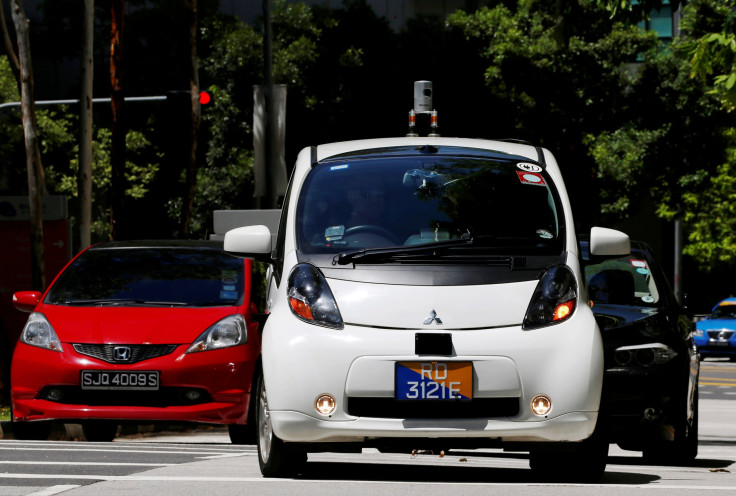How Self-Driving, AI And Robotics Will Transform The Auto Industry

The auto industry seems to be ready for disruption. It is an industry that has functioned largely without changes for the past hundred years, but with the emergence of technologies such as artificial intelligence, self-driving and robotics, the basic paradigm of the industry is expected to change.
Robotics, for example, has been used for a long time in the auto industry, but not at the rate that it are being applied currently. Tesla, the biggest disruptor in the automotive industry, has set the trend for increasingly robot-run factories.
The Tesla Gigafactory 1 is located at a site which was previously a General Motors automotive factory that employed more than 50,000 people. In contrast, the Gigafactory 1 employs just 10,000 people and uses robots and automation to make its cars, such as the newly launched Model 3. The company employs robots such as the self-navigating Autonomous Indoor Vehicles (AIVs).
It also uses a lot of Automated Guided Vehicles (AGVs) which are used for transporting equipment from one section to the other.
The car assembly is done with the help of robotic arms instead of by tool-wielding humans.
While the Tesla Gigafactory 1 is just one of many examples of auto companies increasingly employing robots in production, it is the strongest indication that as the auto industry moves toward automation and robotics, human employment in the industry is set to decrease. In other words, the auto industry will not be a large scale employer and as the industry progresses and competition with brands such as Tesla rises, companies will increasingly opt for robot-run factories like the Gigafactory 1.
Artificial intelligence (AI) will also play a large part in the future of the automotive industry. According to the Information Handling Services (IHS) Technology's Automotive Electronics Roadmap Report, the use of AI based driver-assistance systems in vehicles is set to jump from 7 million a couple of years ago to 122 million by 2025.
"An artificial-intelligence system continuously learns from experience and by its ability to discern and recognize its surroundings. It learns as human beings do, from real sounds, images and other sensory inputs. The system recognizes the car's environment and evaluates the contextual implications for the moving car," said Luca De Ambroggi, IHS Technology's principal analyst for automotive semiconductors, according to a report by Computerworld.
AI-based systems are set to become basic systems for vehicles and in combination with technologies such as speech recognition, gesture recognition, eye tracking, driver monitoring and virtual assistance, these systems are expected to make driving safer and also more automated.
Since cars are increasingly expected to be equipped with hardware such as camera-based machine units, radar-detection units and driver evaluation units, AI will serve as the connecting interface between the regular car machinery and such hardware — e.g., advance brake warnings using object detection feedback from the onboard cameras.
This technology is expected to change the way we drive. According to Gartner, there will be 250 million connected vehicles on the roads by 2020, which will be using AI in some way or other.
Self-driving, a technology which is still not mainstream and yet has major auto and tech players investing in it, is set to change the auto industry in the biggest of ways. With many car makers aiming to achieve full autonomy by 2021, the end of driving as we know it might be near.
With cars such as the Tesla Model 3 equipped with semi-autonomous features, which let the car be driven using automation on highways, the move toward the end of human driving seems to have begun.
Apart from taking over control from human drivers, self-driving has the potential of changing the notion of car ownership as it stands. Currently, you buy a car and drive it yourself or hail a cab.
The problem with lending out cars is, in some ways, due to the inconsistency of human driving. Once driving becomes safer, thanks to a universal standard of safety followed by self-driven cars, this might not be an issue.
Think about a world in which driving is no longer necessary. Since the cars will be driven via automation, chances are that people might actually lend their cars out when they are not using them. These cars could be used by ride-hailing services such as Uber and returned to the owner at the time of his/her usage.
Another paradigm is that since self-driven cars would be available 24 hours, a person could simply order a car to his/her door rather than keep one in the driveway. Automotive transport could transform into a utility like electricity or water supply.
According to the MIT's Milken Institute’s AgeLab, “When the brightest-eyed autonomous vehicle advocates talk about self-driving cars transforming society as we know it, what they’re imagining, first and foremost, is the death of car ownership.”
© Copyright IBTimes 2024. All rights reserved.





















